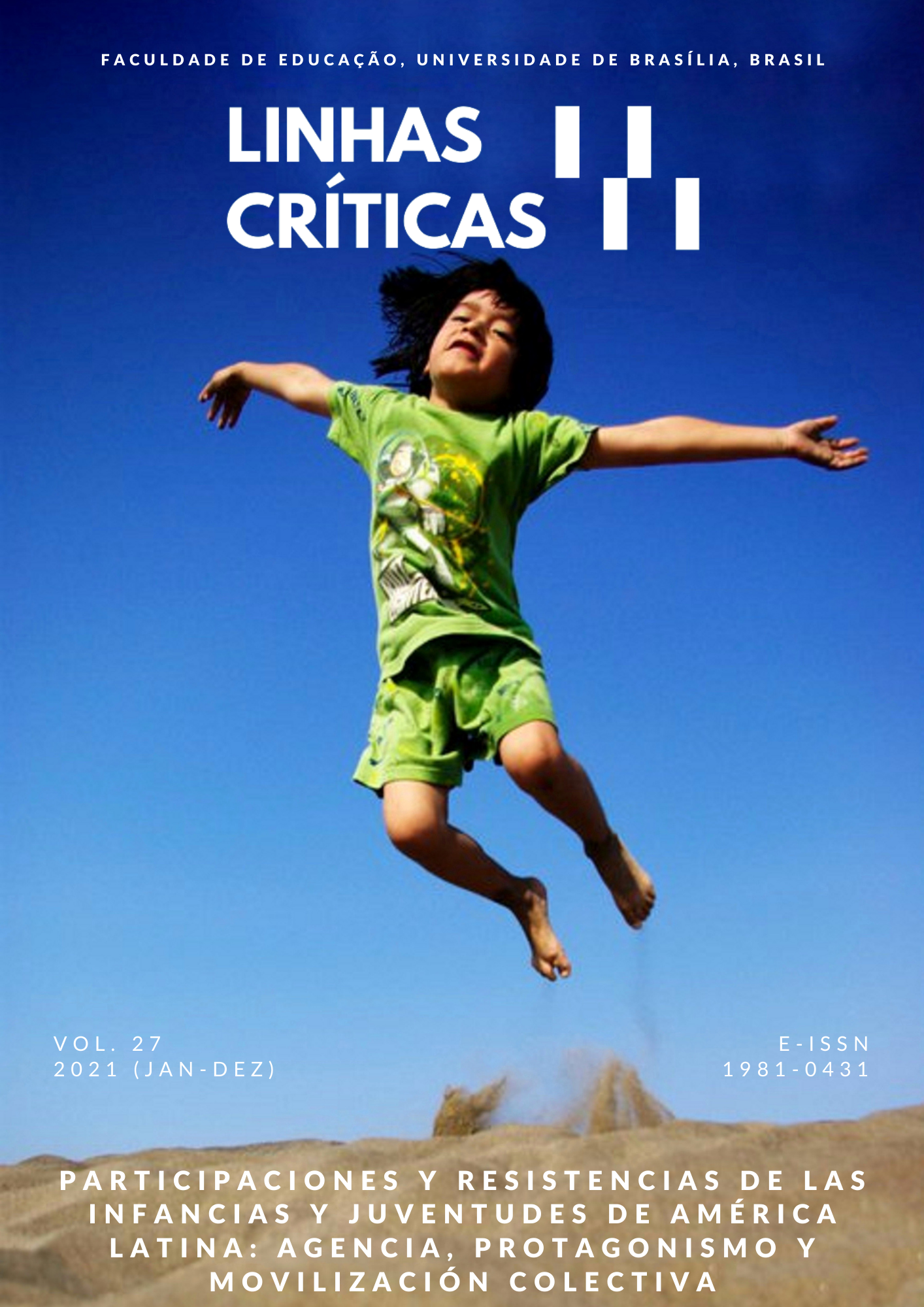The use of the dot in writing and reading numbers
DOI:
https://doi.org/10.26512/lc27202138156Keywords:
Written numbers, Theorems in action, Elementary SchoolAbstract
In this article we reveal theorems in action mobilized by children from the 4th year of Elementary School in activities related to writing numbers with numbers and reading them in their current form. The data that make up part of Didactic Engineering were analyzed considering aspects of the Theory of Conceptual Fields and the Theory of Situations. The results indicate: that the nondidactic phases of action, formulation and validation permeated the application of the activities when, for example, the children elaborated strategies to solve the proposed calculations; the mobilization of different theorems in action, mainly those linked to the use of the dot to facilitate reading and the organization of the number.
Downloads
References
Angelo, C. L. (2012). Uma leitura das falas dos alunos do ensino fundamental sobre a aula de matemática. [Tese de doutorado, Universidade Estadual Paulista]. Repositório institucional da UNESP Rio Claro. https://repositorio.unesp.br/handle/11449/102112
Anselmo, B., & Planchette, P. (2006). Le calcul mental au collège: nostalgie ou innovation? Repères-IREM, 62, 5-20. https://numerisation.irem.univ-mrs.fr/WR/IWR06001/IWR06001.pdf
Artigue, M. (1988). Ingénierie Didactique. Recherches en Didactique des Mathémaques, 9(3), 281-308.
Brasil. (2017). Base Nacional Comum Curricular. Ministério da Educação. http://basenacionalcomum.mec.gov.br/images/BNC C_20dez_site.pdf
Brizuela, B. M. (2006). Desenvolvimento matemático na criança: explorando notações. Artemed.
Brousseau, G. (1986). Fondements et méthodes de la didactique des mathématiques. Recherches en Didactique des Mathématiques, 7(2), 33-115.
Butlen, D., & Pezard, M. (2000). Calcul mental et résolution de problèmes numériques au début du collège. Repères-IREM, 41, 5-24. https://numerisation.irem.univ-mrs.fr/WR/IWR00029/IWR00029.pdf
Curi, E. (2013). Práticas e reflexões de professoras numa pesquisa longitudinal. Revista Brasileira de Estudos Pedagógicos, 94(237), 474-500. https://doi.org/10.24109/2176-6681.rbep.94i237.374
Douady, R. (1994). Evolução da relação com o saber em matemática na escola primária: uma crônica sobre cálculo mental. Em Aberto, 14(62), 33-42. http://www.emaberto.inep.gov.br/ojs3/index.php/emaberto/article/view/2269/2008
Gontijo, C. H., Silva, E. B. da, & Carvalho, R. P. F. de. (2012). A criatividade e as situações didáticas no ensino e aprendizagem da matemática. Linhas Crí¬ticas, 18(35), 29–46. https://doi.org/10.26512/lc.v18i35.3839
Lerner, D., & Sadovsky, P. (1996). O sistema de numeração: um problema didático. Em C. Parra, & I. Saiz (org.) Didática da Matemática (pp. 36-47). Artes Médicas.
Lethielleux, C. (2001). Le calcul mental au cycle des approfondissements. Collection Pratique Pédagogique, Armand Colin.
Nunes, T., & Bryant, P. (1997). Crianças fazendo matemática. Artes Médicas.
Nunes, T., Campos, T. M. M., Magina, S., & Bryant, P. (2005). Educação Matemática 1: números e operações numéricas. Cortez.
Parra, C. (1996). Cálculo mental na escola primária. Em C. Parra, & I. Saiz (org.) Didática da Matemática (pp. 36-47). Artes Médicas.
Valente, W. R. (2006). A aritmética na escola de primeiras letras: os livros de aprender a contar no Brasil do século XIX. Revista Iberoamericana de Educación Matemática, 7, 71-81. https://repositorio.ufsc.br/bitstream/handle/123456789/160513/artigooo.pdf
Vergnaud, G. (1996). A teoria dos campos conceituais. Em J. Brun (dir.) Didática das matemáticas (pp. 155- 191). Instituto Piaget.
Zancan, S., & Sauerwein, R. A. (2017). Uma Análise das Atividades Didáticas e do Cálculo Mental no Primeiro Ano do Ensino Fundamental. Acta Scientiae, 19(1), 70-84. http://posgrad.ulbra.br/periodicos/index.php/acta/article/view/2721/2277
Published
How to Cite
Issue
Section
License
Copyright (c) 2021 Sheila Denize Guimarães

This work is licensed under a Creative Commons Attribution 4.0 International License.
Authors who publish in this journal agree to the following terms:
-Authors maintains the copyright and grants the journal the right of first publication, the work being simultaneously licensed under the Creative Commons Attribution License which allows the sharing of the work with recognition of the authorship of the work and initial publication in this journal.
- Authors are authorized to enter into additional contracts separately, for non-exclusive distribution of the version of the work published in this journal (eg publish in institutional repository or as a book chapter), with acknowledgment of authorship and initial publication in this journal.
-Authorers are allowed and encouraged to publish and distribute their work online (eg in institutional repositories or on their personal page) at any point before or during the editorial process, as this can generate productive changes as well as increase the impact and the citation of published work (See The Effect of Free Access).



